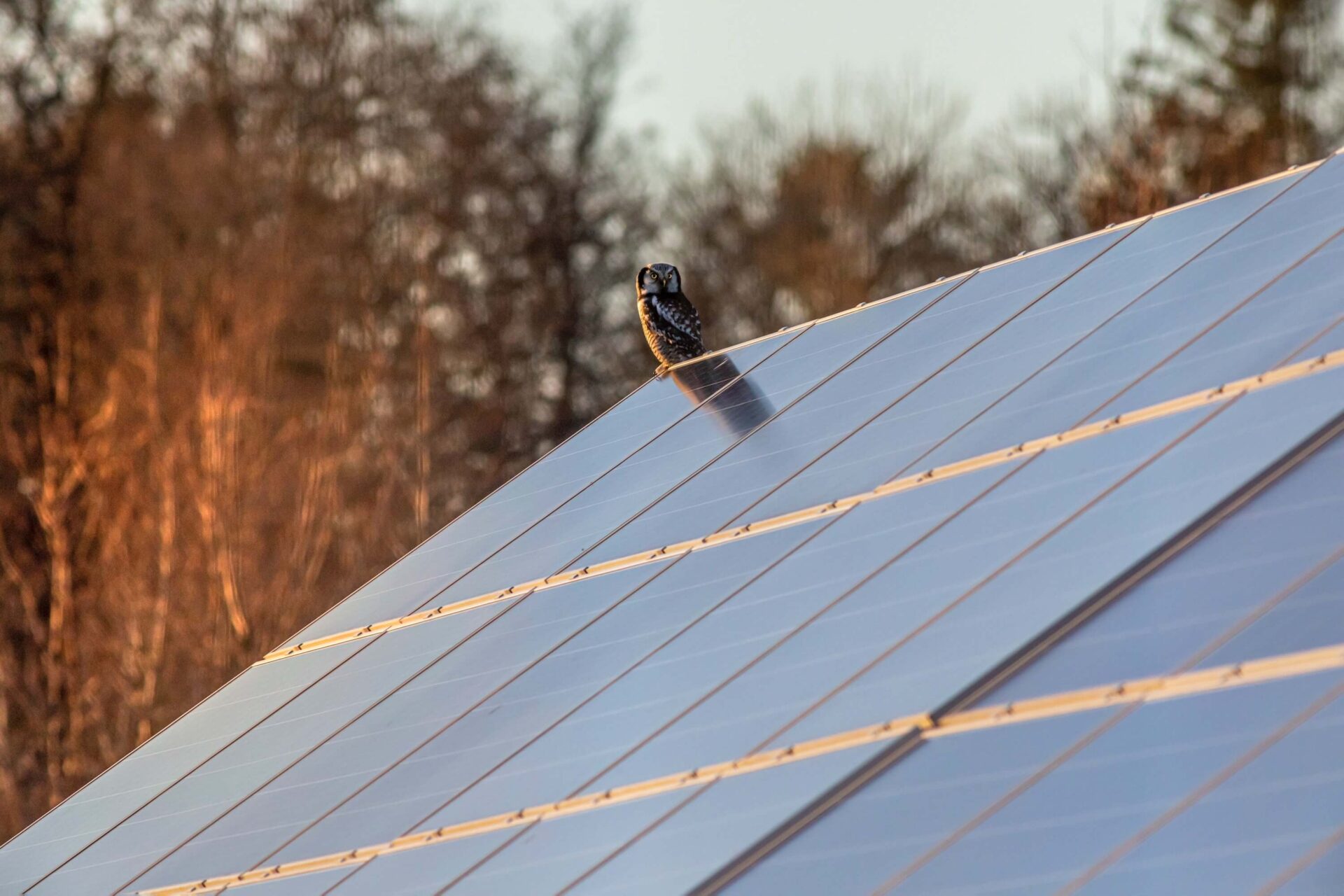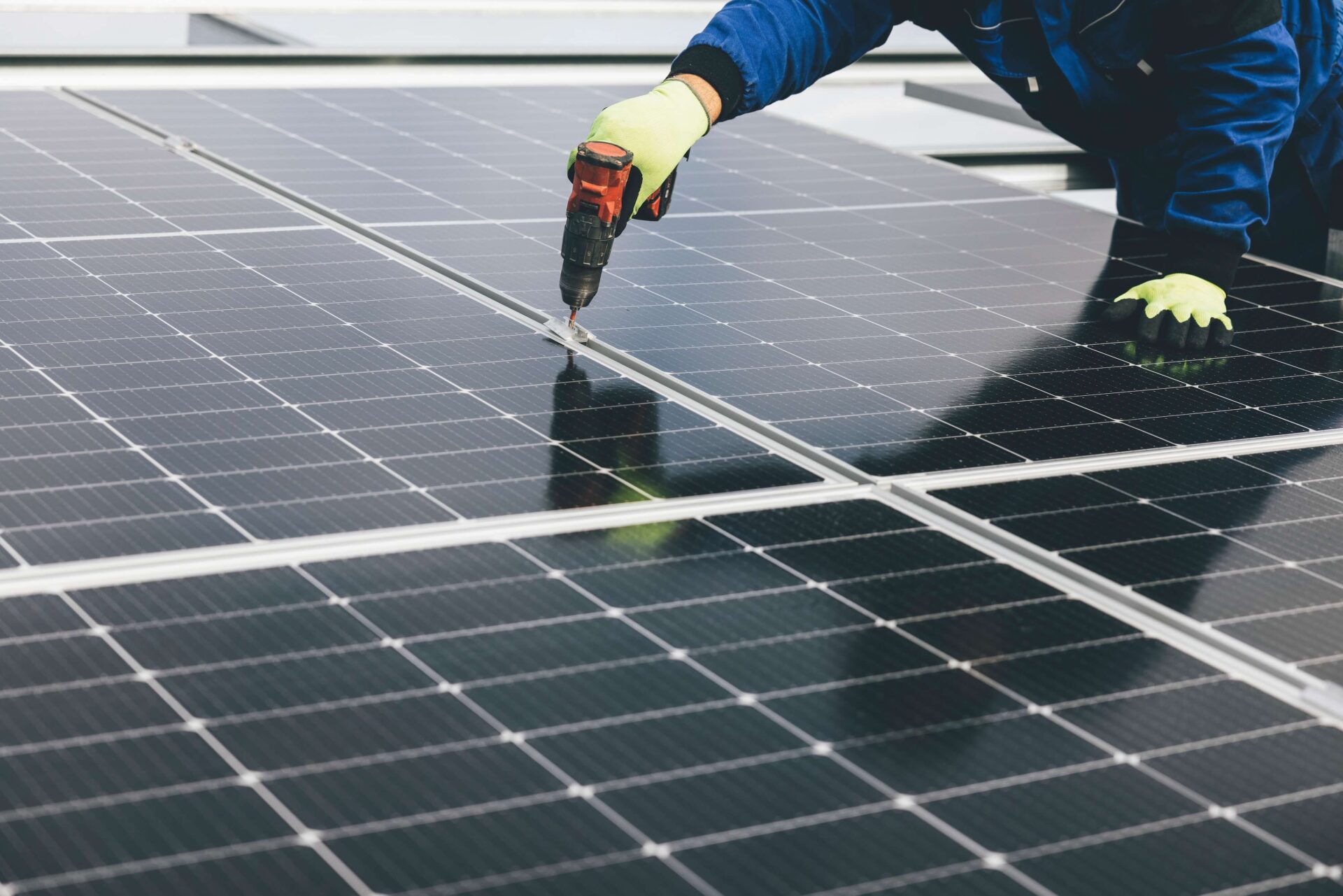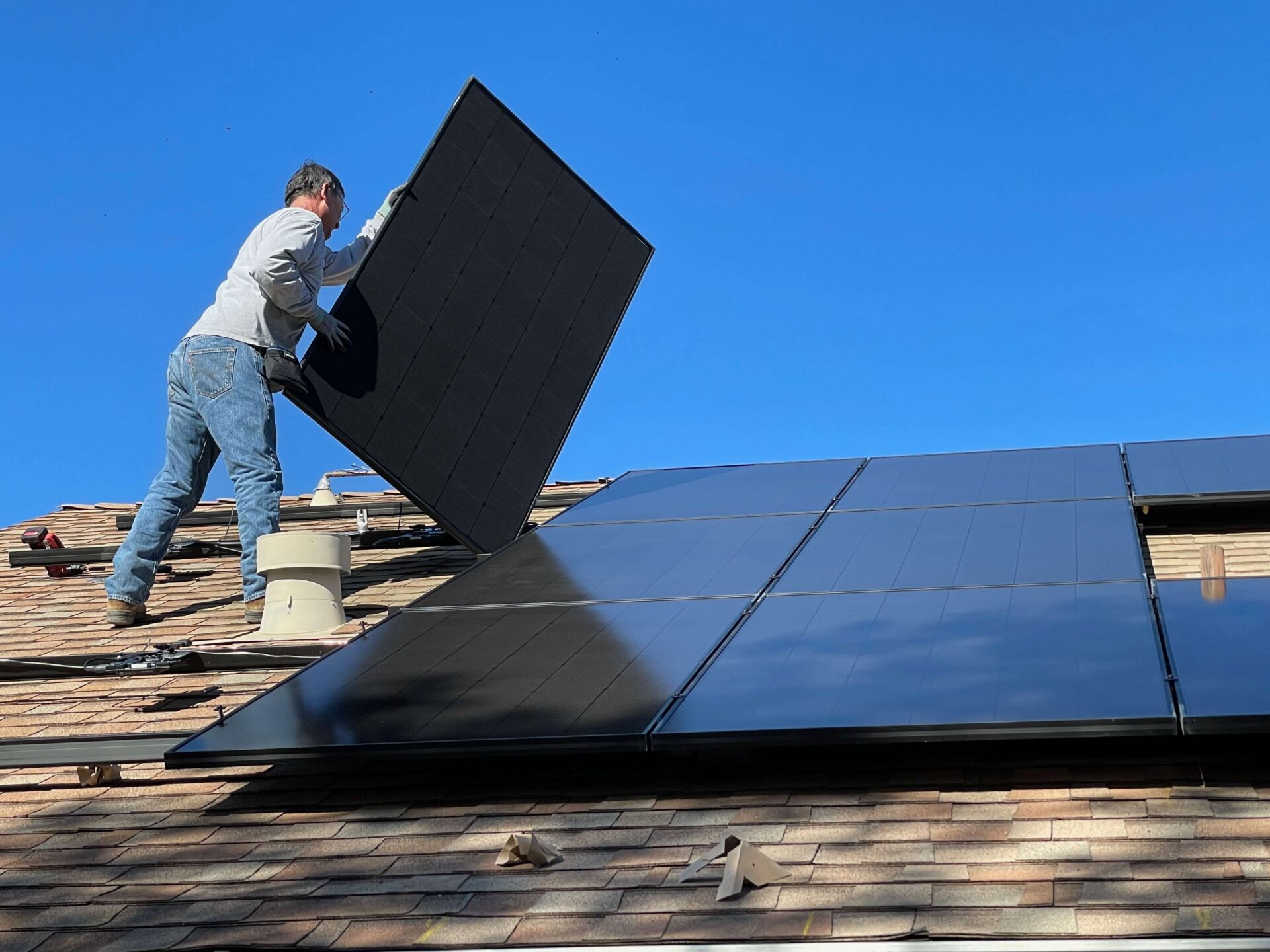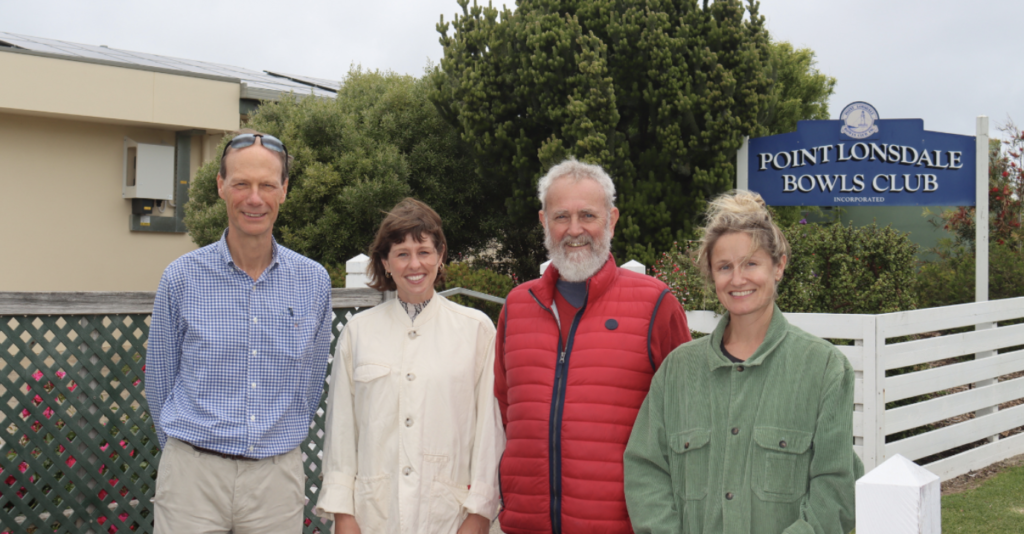An emerging challenge in the transition to clean energy in regions such as New England, NSW, is land-use conflict, and the new practice of conservoltaics may be one solution. Conservoltaics refers to the process of combining solar energy production and biodiversity conservation and restoration.
Glenn Christie of Succession Ecology is rolling out conservoltaic initiatives (or “ecovoltaics” as he calls it) with great results in South Australia. Christie works with developers to build biodiversity on mid to large-scale solar farms in the red soil country.
“In this arid climate, we focus on native ground cover as a means to improve biodiversity along with efficiency for energy generation,” Christie said.
“Animals such as lizards and birds can thrive in the protected environment beneath the solar panels. Plus, the groundlayer keeps the panels cooler, thereby improving efficiency. Having groundcover results in less dust, so once again, efficiency is improved and maintenance costs are reduced.”
It’s a practice that a local collaboration is looking to bring to the New England renewable energy zone (REZ), situated halfway between Sydney and Brisbane on land traditionally managed by First Nations Custodians including Anaiwan, Banbai, Dunghutti and Gumbaynggirr. The REZ is part of a NSW government plan to produce 6-8GW of clean energy as aging coal-fired power stations are retired.
While the shift from fossil fuels to renewables will help mitigate climate change, community members and environmentalists are concerned about the local impact that construction of wind and solar farms may have on wildlife habitats and ecology.
The concerns follow conservation losses experienced recently in the region due to Black Summer bushfires, drought and other development such as new industrial and housing estates.
Shared land-use options for agricultural land
In the New England Renewable Energy Zone (REZ), sites chosen for renewable energy projects are often land that was previously used for agriculture.
This can raise concerns within nearby communities about changes in land-use. People worry that these solar, wind or battery projects will reduce the land available for agriculture, which can have local economic and supply flow-on effects.
Spotted marsh frog (Limnodynastes tasmaniensis) found within a solar farm in Armidale, NSW, Australia. Photographer: Eric Nordberg, 2022.
The practice of agrisolar (or agrivoltaics), in which sheep graze under panels, bees are kept or vegetables tended in interrows between arrays, for example, is beginning to address the potential conflict between land-use for renewable energy and agriculture. Early studies of co-benefits are promising, and in 2021, Clean Energy Council published the Australian Guide to Agrisolar for Large-Scale Solar to collate the early findings of agrisolar research and practice in Australia and internationally.
Could a similar harmony be found to exist with conservation and renewable energy generation? Is it possible to not just avoid high conservation areas, but also to improve biodiversity on sites where under the prior agricultural land-use and drought it had suffered?
University of New England’s Eric Nordberg and James Cook University’s Lin Schwarzkopf have recently published a research summary of initial findings of the role solar farms can play in improving biodiversity, along with identifying gaps where further research is needed.
“The benefit of renewable energy in reducing carbon emissions is well known. But more work is needed to understand how solar farms can benefit wildlife,” Mr Nordberg said in an article he wrote in February for The Conversation.
“Research is also lacking on how to locate, configure and manage solar farms to best enhance biodiversity. Collaborations between industry, land managers and researchers are needed so clean energy production and conservation can go hand-in-hand.”
CPA secures FRRR funding to develop a guide to bring better biodiversity on solar farms in the New England
CPA has secured a grant to co-ordinate a Guide to Better Biodiversity on Solar Farms, with support from the Foundation for Rural & Regional Renewal’s Strengthening Rural Communities Program.
The Guide will include strategies and case-studies to improve conservation planning and implementation on solar farms, with a focus on plant and animal communities that are endemic to the Northern Tablelands and Nandewar bioregions, in which the New England sits. It will draw on the collective experience of ecologists, conservation groups, landowners and solar farm operators.
Dave Carr is Principal Ecologist for Armidale-based consultancy Stringybark Ecological and will be a key collaborator on the Guide. For 30 years he has worked to restore and protect native vegetation, with a focus on the Nandewar and Northern Tablelands bioregions, where the New England REZ is located.
“Solar farms present a set of opportunities and constraints for managing biodiversity in a fragmented landscape,” Mr Carr wrote in a letter of support for the application CPA made for grant funding to FRRR to produce the Guide.
“Opportunities include: improvements in the condition and structure of the groundlayer vegetation; enhancement of habitat for fauna that depend on the groundlayer; improvement in extent and condition of riparian zones; and establishment of connectivity for wildlife using boundary plantings.”
In Europe, a collaboration called the Renewable Grids Initiative (RGI) has been instrumental in improving conservation outcomes through the renewable energy transition overseas.
Under the guidance of RGI, a coalition of Europe’s 29 largest environmental NGOs and grid operators “pledged to work in partnership to ensure that the goals of grid modernisation and environmental protection can be achieved side by side.”
Through the Renewable Grids Initiative, conservation outcomes feature in the development of transmission corridors, which double as meadows or habitat for animals such as deer. Pic: https://renewables-grid.eu/
“It gives us hope to see collaborations such as RGI which bring diverse stakeholders together to plan and achieve better conservation outcomes for renewable energy projects,” said Heidi McElnea, who is coordinating the consultation and production of the Guide for CPA.
“What we’re lacking right now in the New England is relevant information which can streamline the process for planning solar farms which include improved conservation outcomes,” McElnea said.
“We’re fortunate in the production of the Guide to be able to draw upon research and experience from elsewhere in Australia and overseas, as well as our diverse groups’ expertise in the New England. It will be exciting to have more sustainable developments underway which provide an opportunity for tracking and improving biodiversity outcomes. The potential is enormous.”
The Guide to Better Biodiversity on Solar Farms will be workshopped with stakeholder groups in late 2023 and available in print and online in early 2024. We thank the FRRR for supporting this important work.
References
Renewables Grid Alliance https://renewables-grid.eu/
The Nature Conservancy, 2023, Power of Place Report 2023 https://www.nature.org/content/dam/tnc/nature/en/documents/FINAL_TNC_Power_of_Place_National_Executive_Summary_5_2_2023.pdf
Clean Energy Council, 2021, Australian Guide to Agriculture for Large-Scale Solar https://assets.cleanenergycouncil.org.au/documents/resources/reports/agrisolar-guide/Australian-guide-to-agrisolar-for-large-scale-solar.pdf
Nordberg, E.J., Julian Caley, M., Schwarzkopf, L., 2021, Designing solar farms for synergistic commercial and conservation outcomes, Solar Energy, Volume 228, https://www.sciencedirect.com/science/article/abs/pii/S0038092X21008562?via%3Dihub
Nordberg, E.J. & Schwarzkopf, L. (2023) Developing conservoltaic systems to support biodiversity on solar farms. Austral Ecology, 48, 643– 649. Available from: https://doi.org/10.1111/aec.13289 https://onlinelibrary.wiley.com/doi/full/10.1111/aec.13289
Nordberg, E., 2023, Win-win: how solar farms can double as havens for our wildlife The Conversation
United Nations, 2015, Transforming our World, Agenda for Sustainable Development, accessed https://sdgs.un.org/sites/default/files/publications/21252030%20Agenda%20for%20Sustainable%20Development%20web.pdf
Parker, G.E & Greene, L., 2014, Biodiversity Guidance for Solar Developments BRE National Solar Centre https://www.bre.co.uk/filelibrary/pdf/Brochures/NSC-Biodiversity-Guidance.pdf
Enquist CAF and colleagues, 2017, Foundations of translational ecology. Frontiers in Ecology and the Environment, 15(10), pp. 541–550. https://doi.org/10.1002/fee.1733








